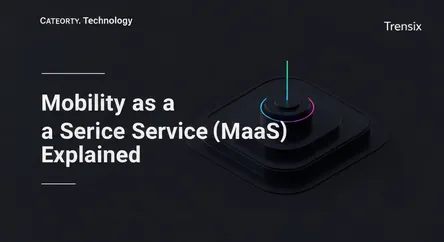Technology
Mobility as a Service (MaaS) Explained

Mobility as a Service (MaaS) integrates various forms of transport into a single, on-demand service. Discover how it's reshaping urban travel.
What is it?
Mobility as a Service (MaaS) is a digital platform that integrates various forms of transportation—like public transit, ride-hailing, car-sharing, and bike rentals—into a single, on-demand service. Instead of using multiple apps and payment methods, users can plan, book, and pay for their entire journey through one application, creating a seamless travel experience. The core idea is to shift away from personally-owned modes of transportation and towards mobility consumed as a service.
Why is it trending?
MaaS is gaining traction due to increasing urbanization, traffic congestion, and a growing demand for sustainable travel solutions. It offers an attractive alternative to private car ownership, which is often expensive and inefficient in dense cities. The widespread adoption of smartphones and advancements in digital payment systems provide the technological backbone for these integrated platforms, making them more accessible and user-friendly than ever before. This convergence of need and technology is attracting consumers, private companies, and city planners alike.
How does it affect people?
MaaS directly impacts daily life by making travel simpler, more flexible, and potentially cheaper. It removes the hassles of car ownership, such as parking, insurance, and maintenance. For commuters, it provides a tailored journey by combining the most efficient modes of transport for any given trip. On a larger scale, successful MaaS implementation can lead to reduced congestion, better air quality, and more livable urban environments, shifting the focus from vehicle ownership to efficient, user-centric mobility.